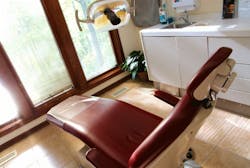Boosting your production with assisted hygiene
If you're looking for a way to boost your production without compromising your quality of care, assisted hygiene is a great option. It's not for everyone and every patient, though, so keep reading to find out how to introduce assisted hygiene into your practice.
Clinical skills and chairside manner aren’t the only factors that define the success of a dental hygienist. Managers and dentists are also considering each provider’s daily and annual production when discussing reviews and raises. It’s certainly a challenge and a juggling act when finding the balance between giving each patient the time and TLC that they expect while trying to squeeze in that extra patient in order to hit your production goal.
For those competitive and driven hygienists who like a challenge, assisted hygiene is great way to boost your production without having to compromise the skills and qualities that make you a great hygienist. Assisted hygiene allows the hygienist to significantly increase production while focusing solely on the core portion of the appointment, while the assistant handles the remaining responsibilities that don’t require a hygiene license (e.g., setting up and breaking down the operatory, updating medical history and radiographs, scheduling recare appointment). Through my own personal experiences, I can share with certainty what helps to keep the schedule running seamlessly and efficiently.
READ MORE | RDH eVillage Salary Survey, part 1: Are annual incomes as rosy as the forecasts?
Open your schedule
Set up a two-column schedule. Each patient is given 60 minutes, staggered every 30 minutes. Two operatories are needed. The assistant starts by seating the patient, updating medical history and radiographs if necessary. The hygienist then steps in for the prophy and exam. At this time, the assistant breaks down and sets up the second room to start the next patient. Both the hygienist and the assistant continuously work between two operatories and two schedule columns.
READ MORE | The assisted boost: An assistant allows the dental hygienist to facilitate case acceptance
Make sure everyone is on the same page
In order for the day to run smoothly, communication is very important between the hygienist, assistant, and dentist. There isn’t much downtime once the first patient is seated, so it’s a great idea to start the day with a quick huddle to go over any questions and review any predictable challenges.
Be selective with patients
Assisted hygiene isn’t for every hygienist, and it certainly isn’t for every patient. I like to schedule healthy adults with good homecare on my assisted hygiene day. I know that I tend to spend more clinical time with perio patients and more time chatting with my elderly patients, so these are two types of patients that I try to avoid scheduling on this day. (It’s impossible to control 100% of your schedule due to cancellations and last-minute fills, but it is helpful when the majority of your patients are typically healthy and low maintenance).
Choose the right day
The point of assisted hygiene is to boost production, not to wreak havoc on an already busy schedule. For our office, we chose Fridays because the dentist doesn’t typically schedule large cases and his day normally consists of shorter appointments. This allows him to prioritize the timing of my schedule to prevent any delays on his part. I recommend choosing the day that tends to be the dentist’s slower day.
READ MORE | Understanding your numbers: The dental hygienist's role in business success
Work with an all-star assistant
I’m lucky because my practice employs the best assistants in the business, so it gives me peace of mind knowing I can trust whoever will be working with me. It is important to have confidence in your assistant’s ability to maintain a strong sense of time management and high standard of chairside manner. It’s hard enough as a hygienist to delegate your responsibilities, so it helps when you know your patients are in good hands with a trusted assistant.
Get some sleep the night before. Trust me, you’re going to need it.
Editor's note: This article first appeared in RDH eVillage. Click here to subscribe.

